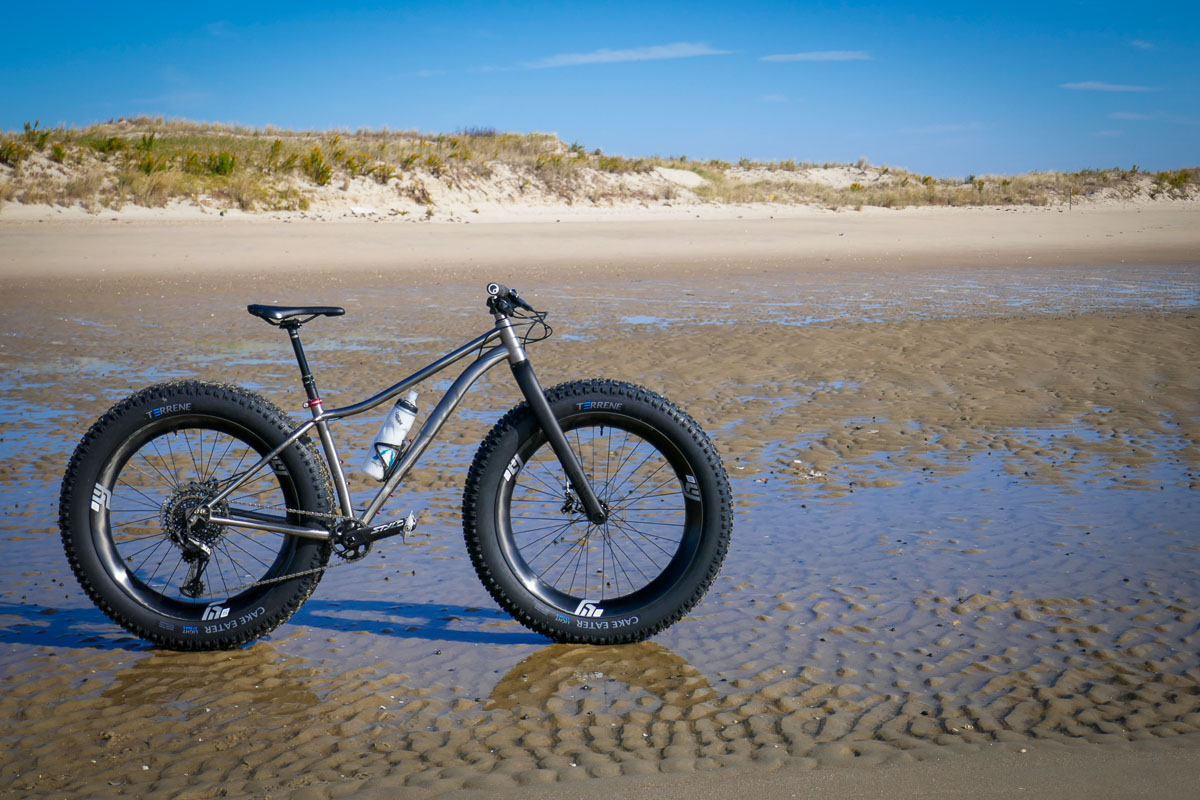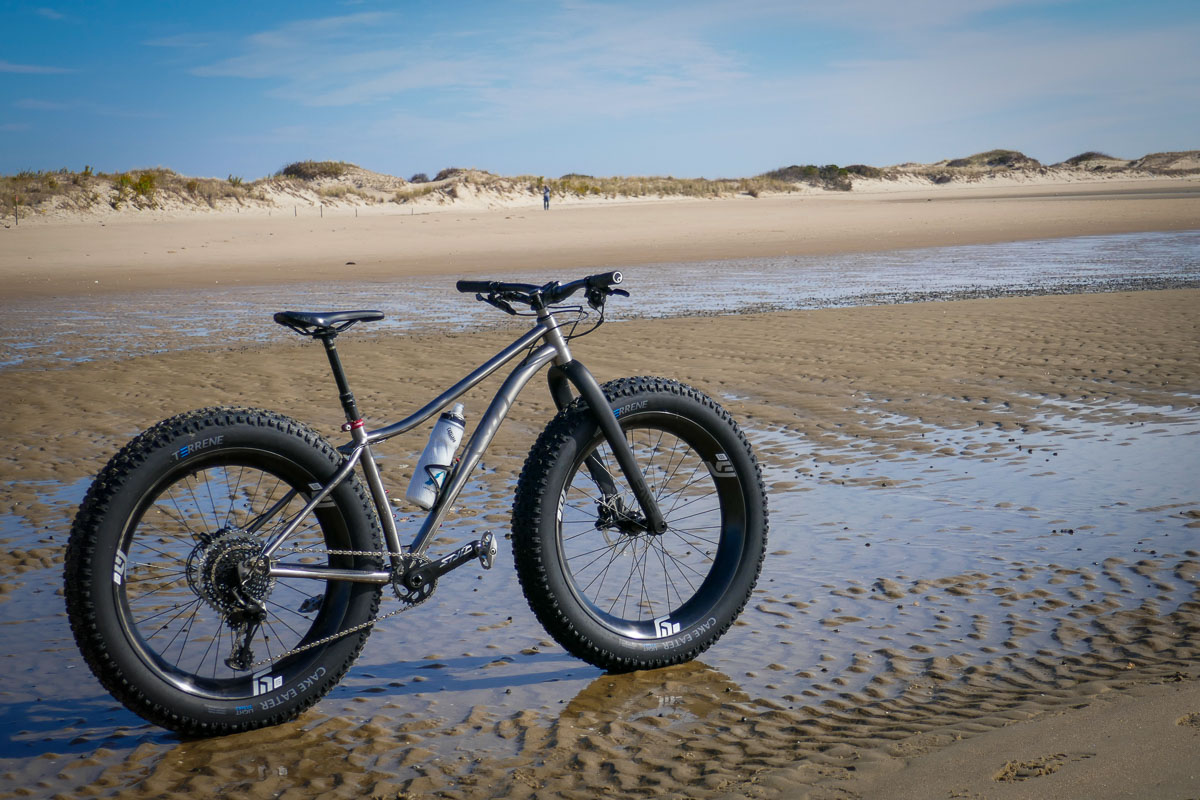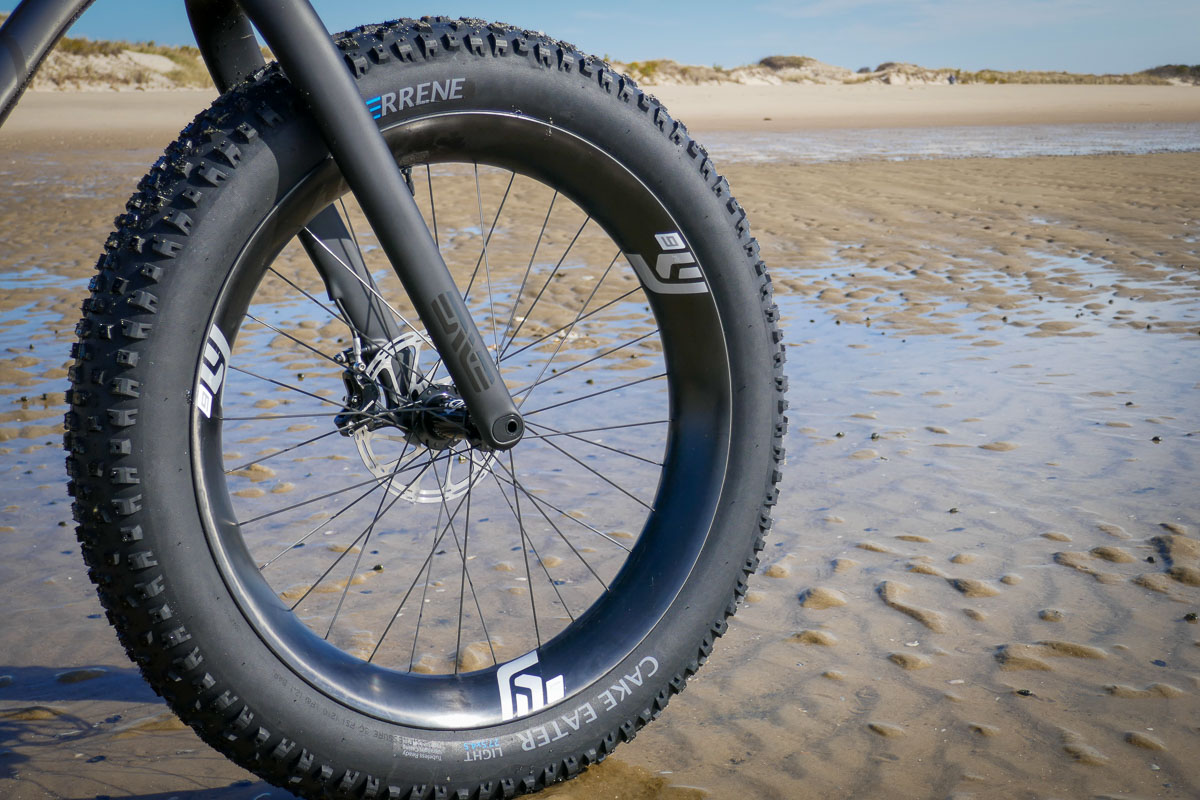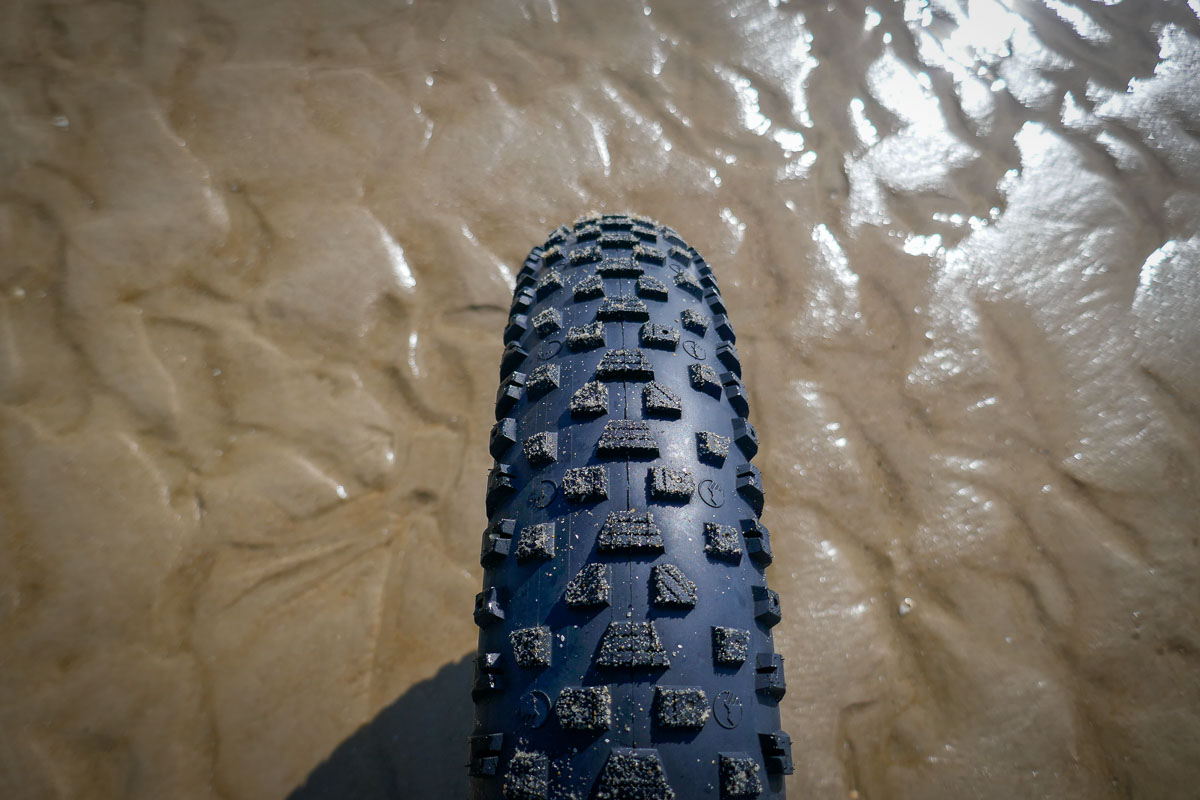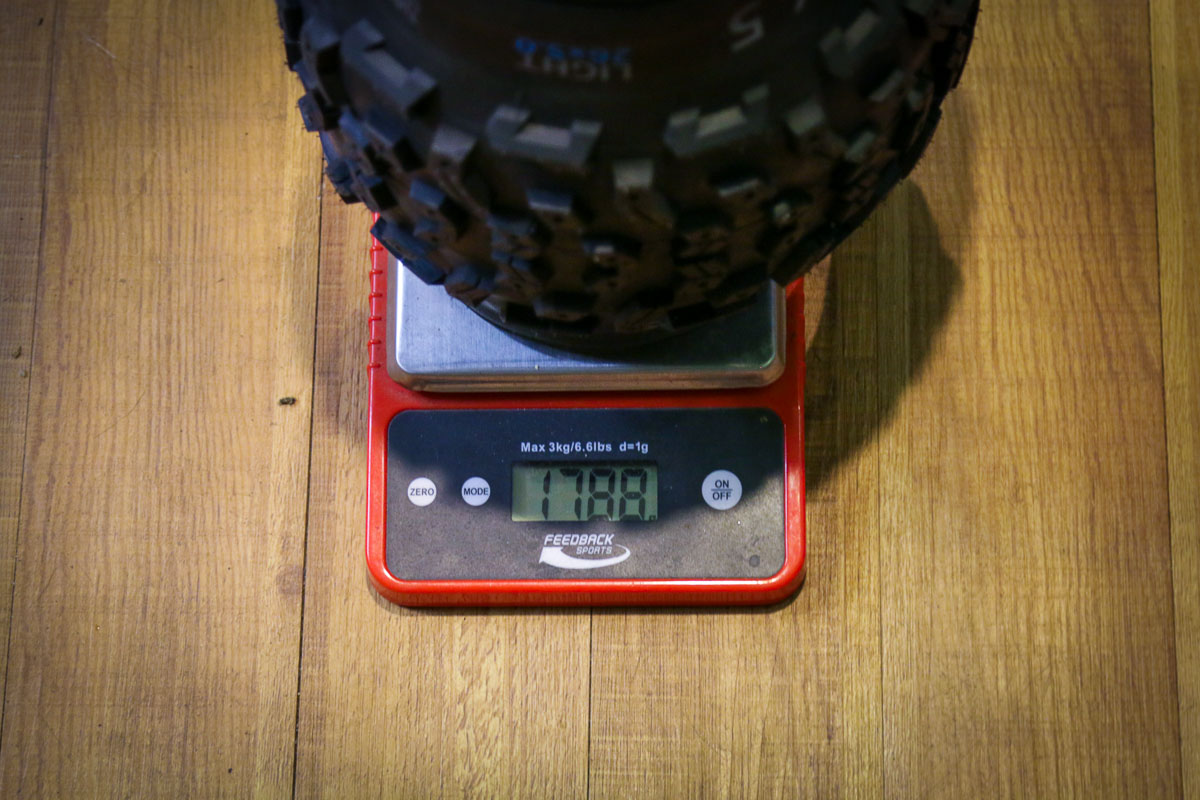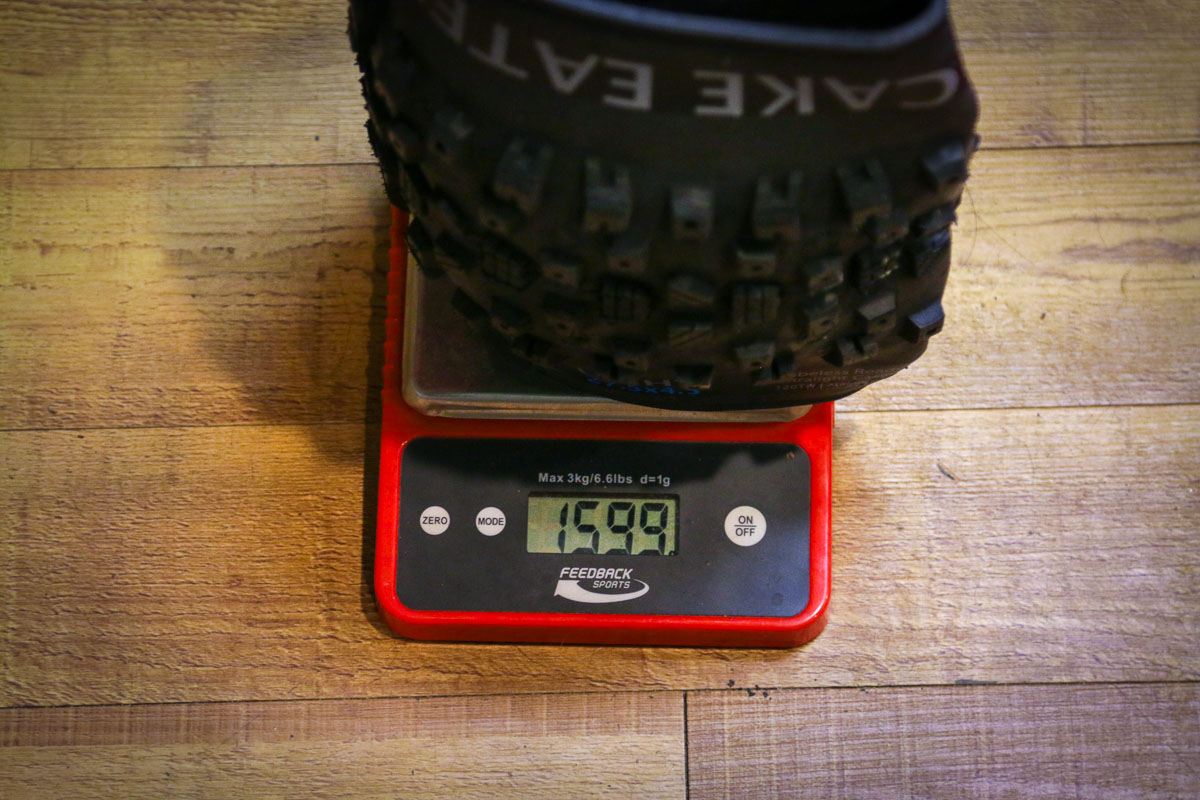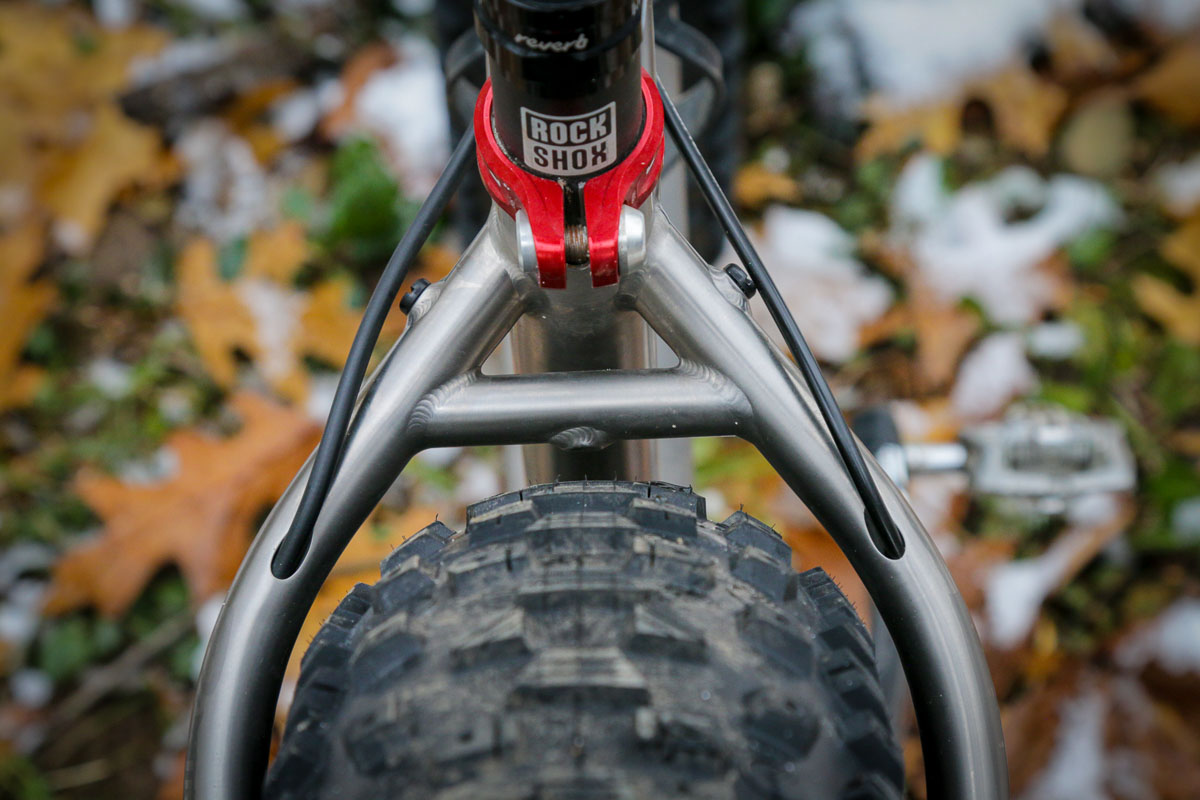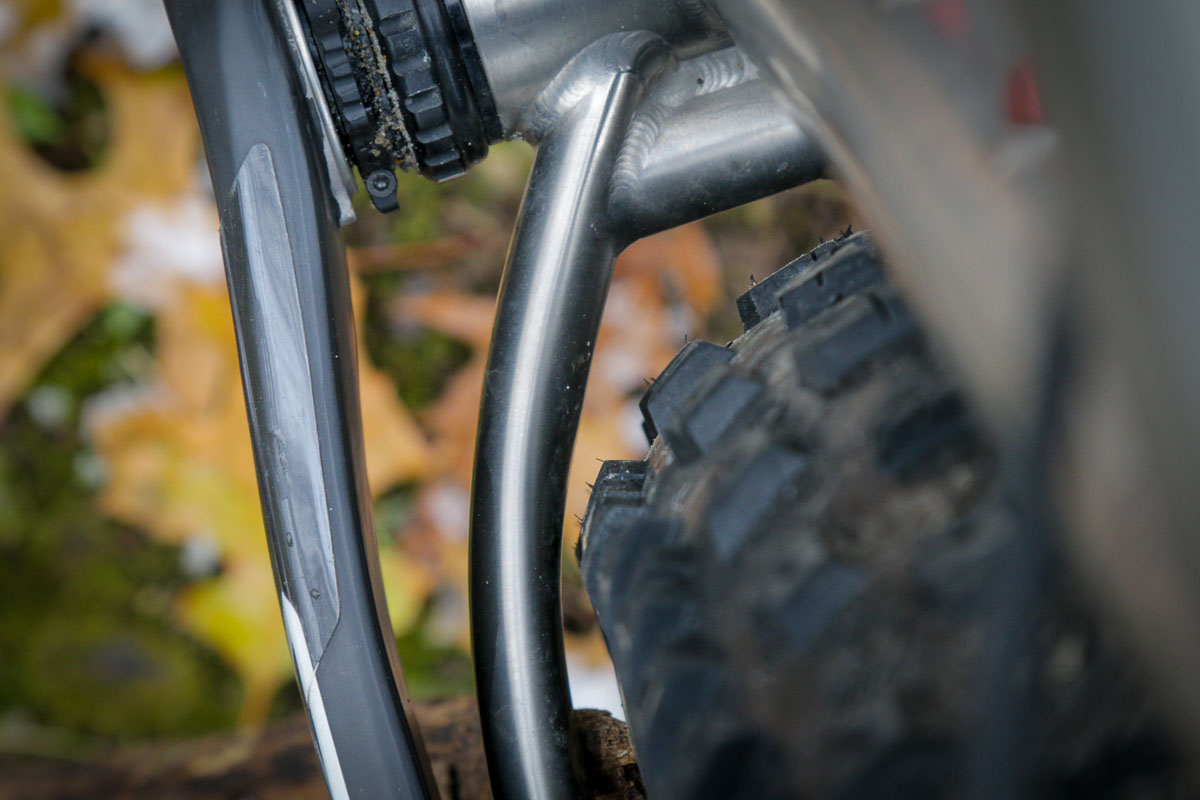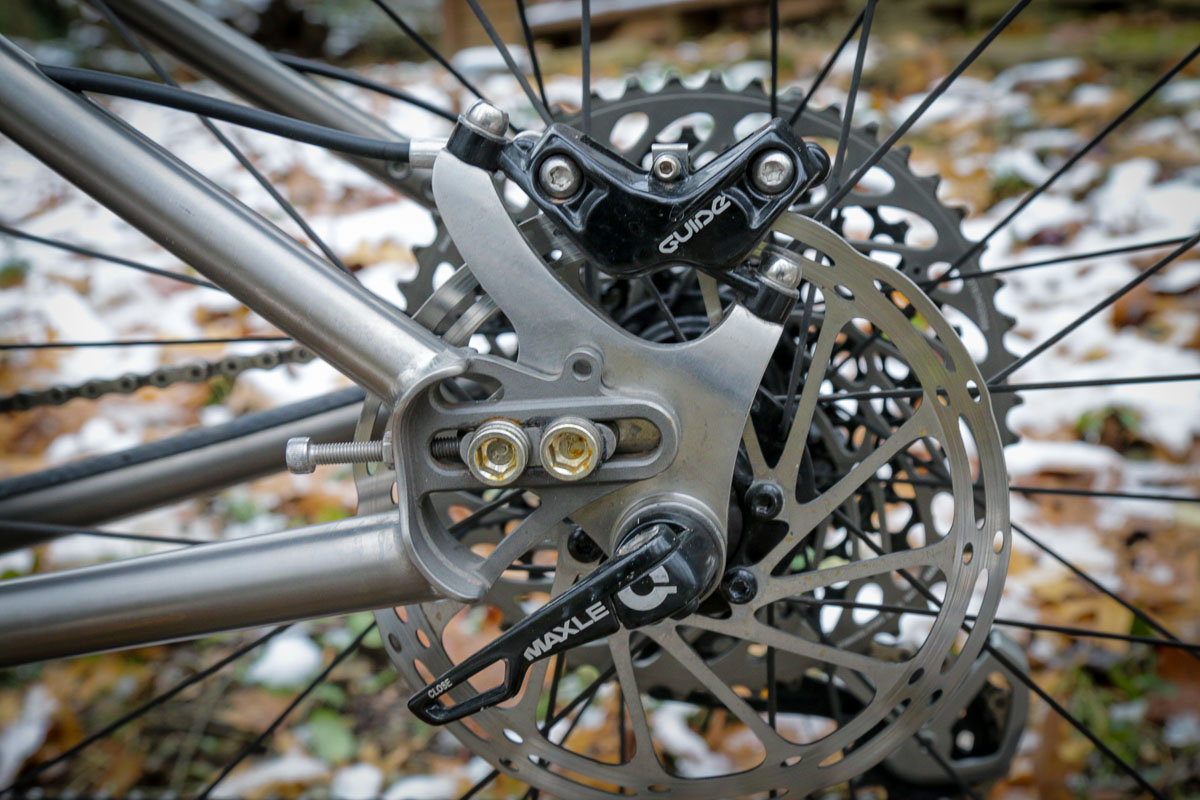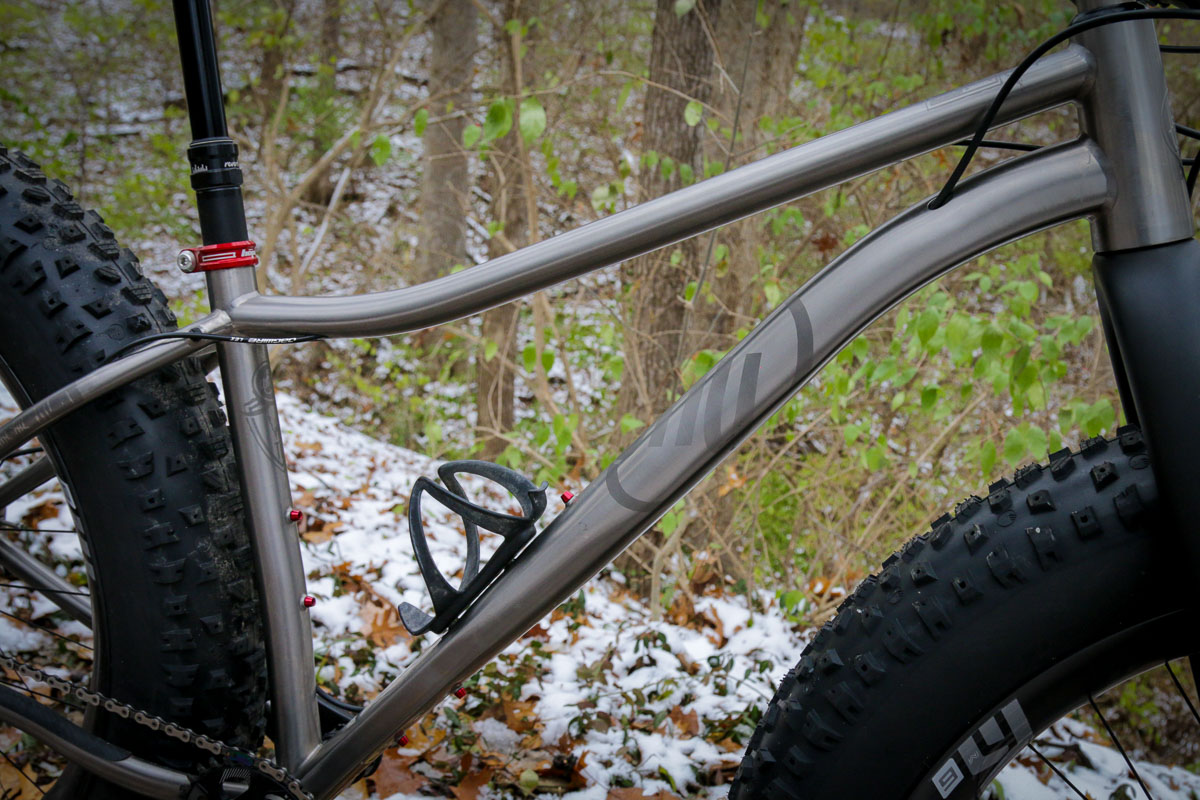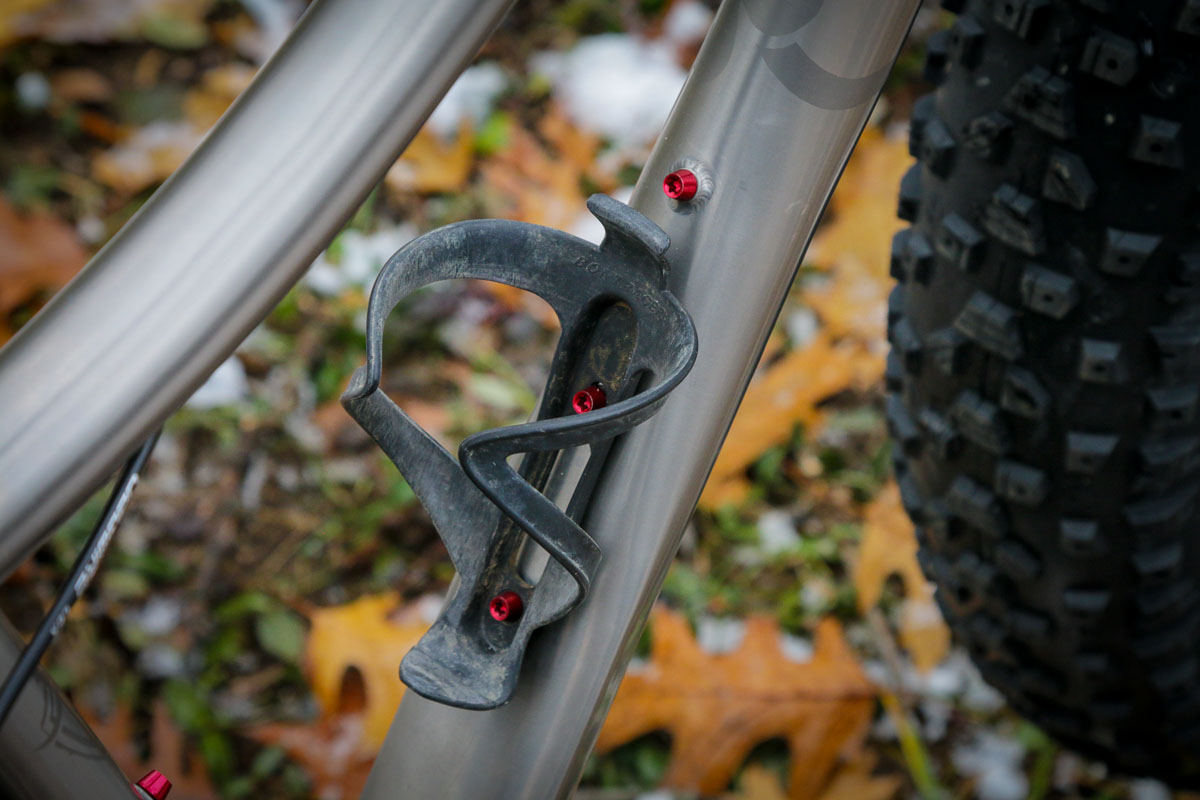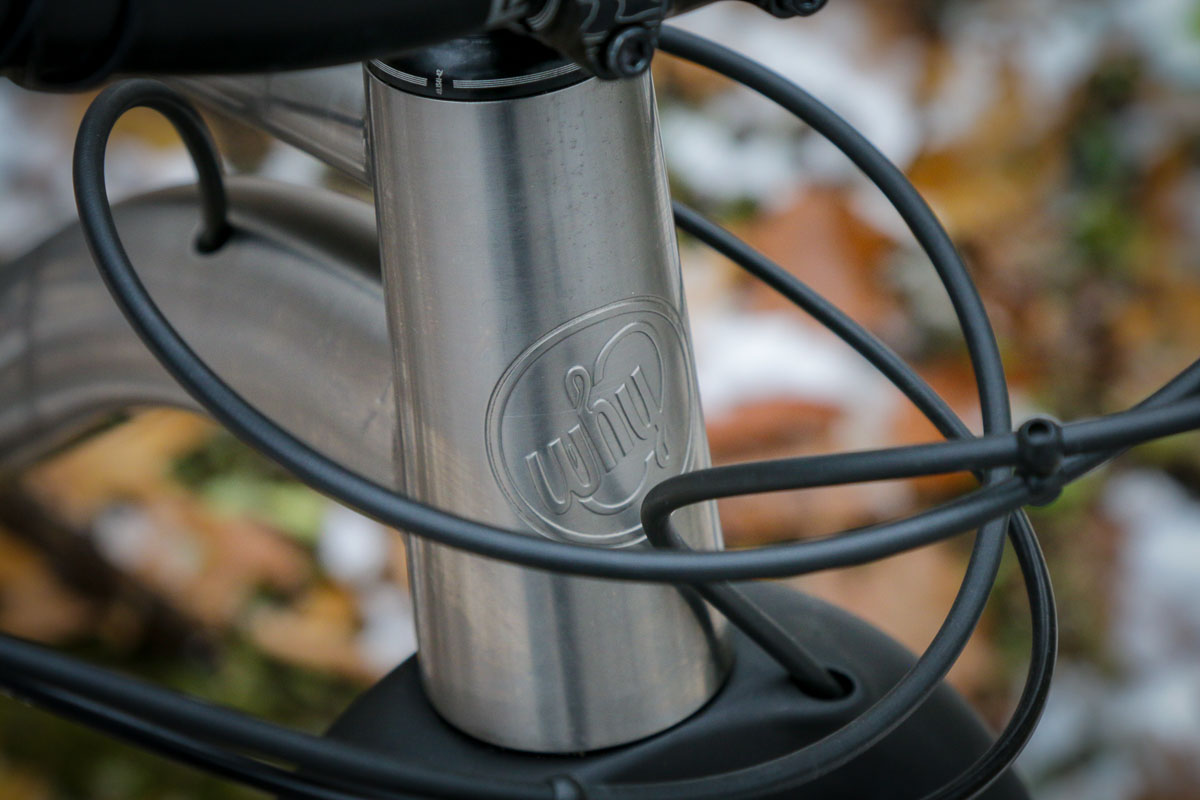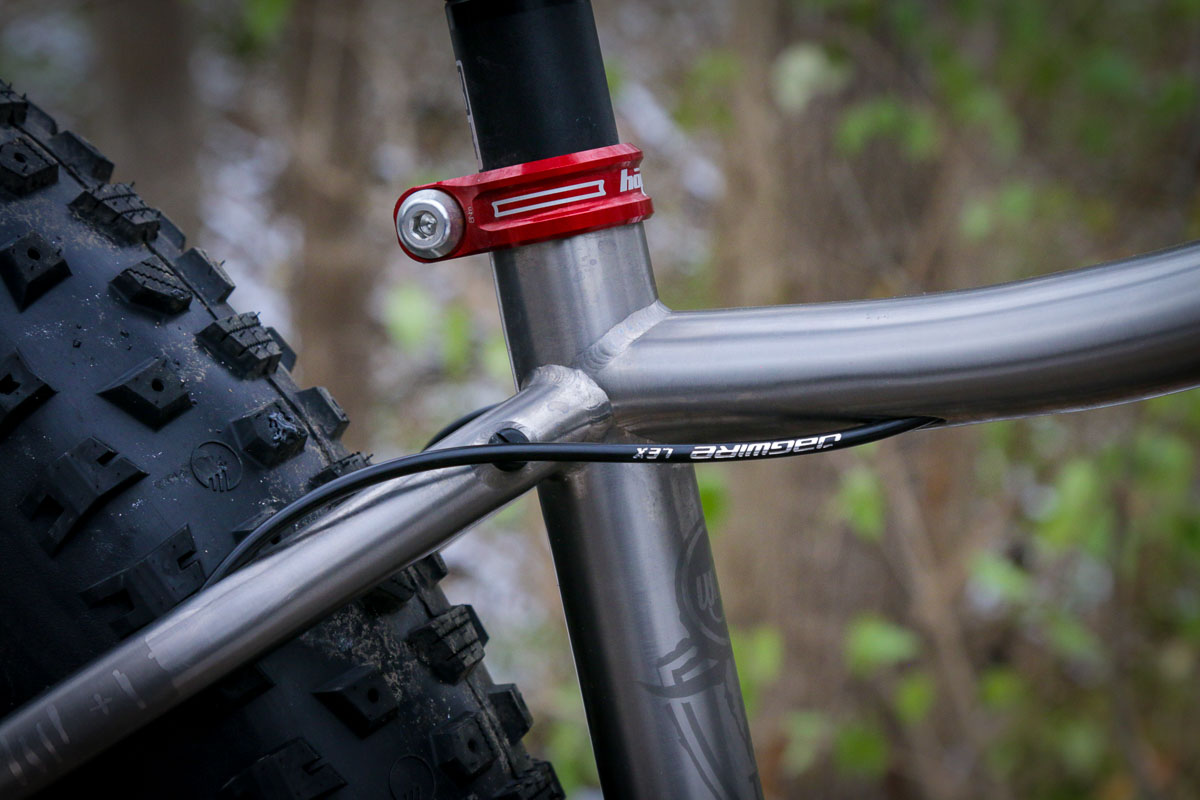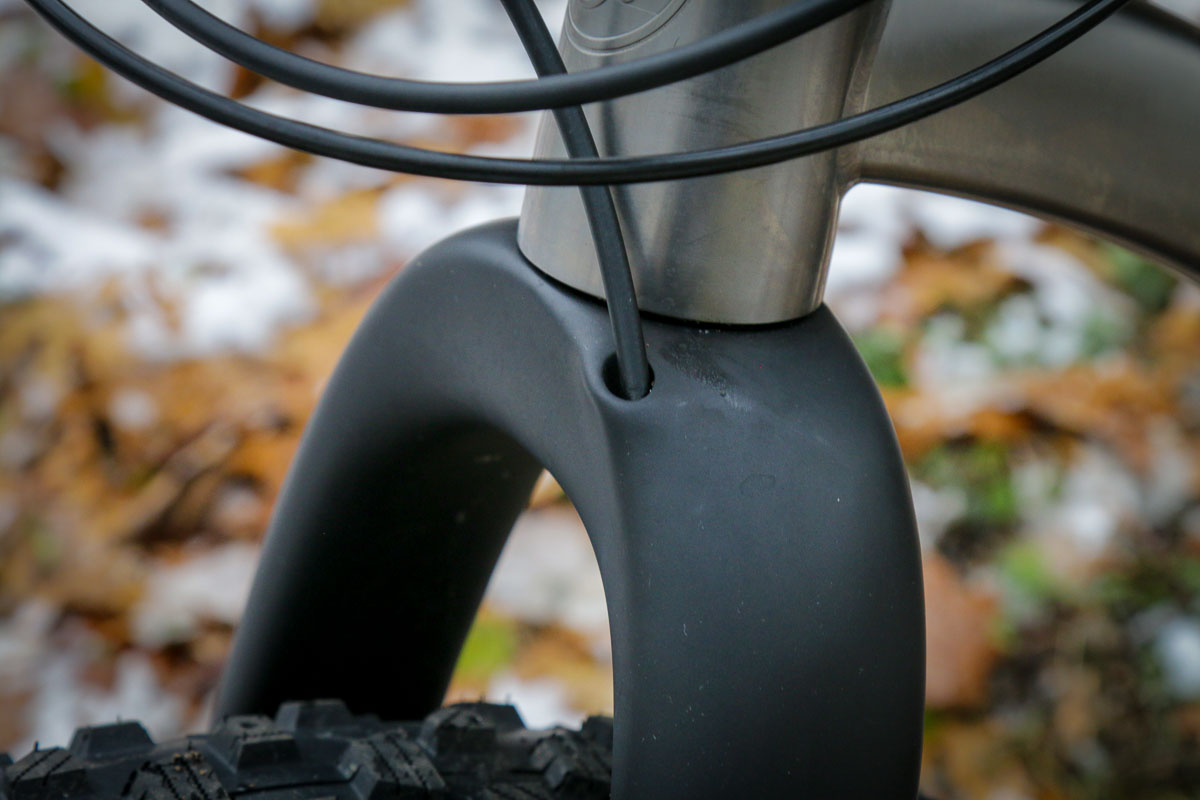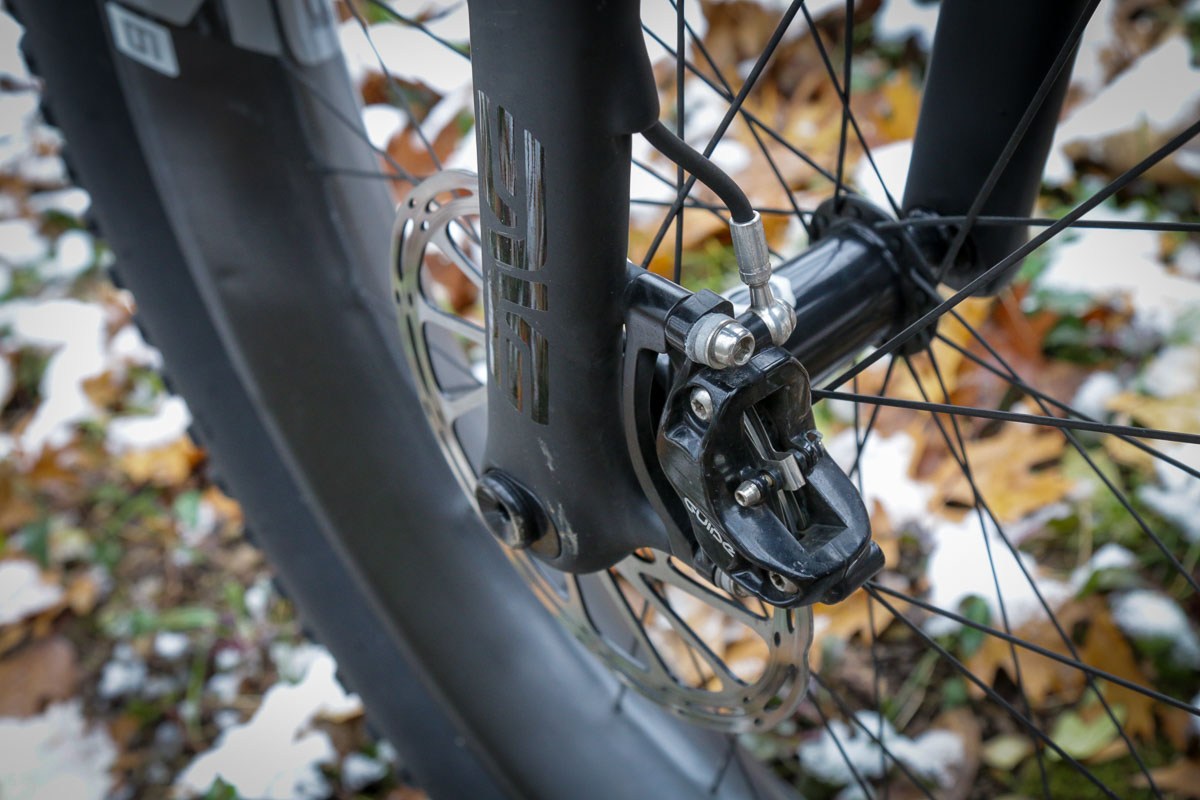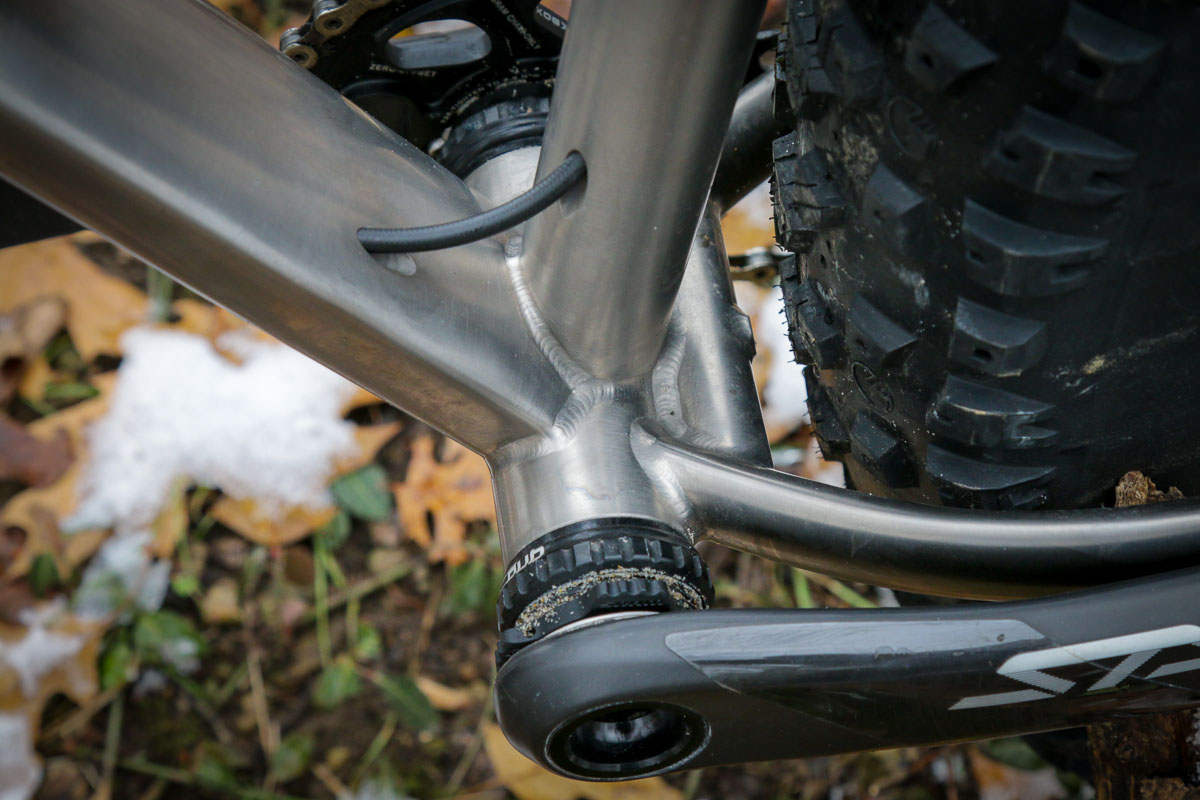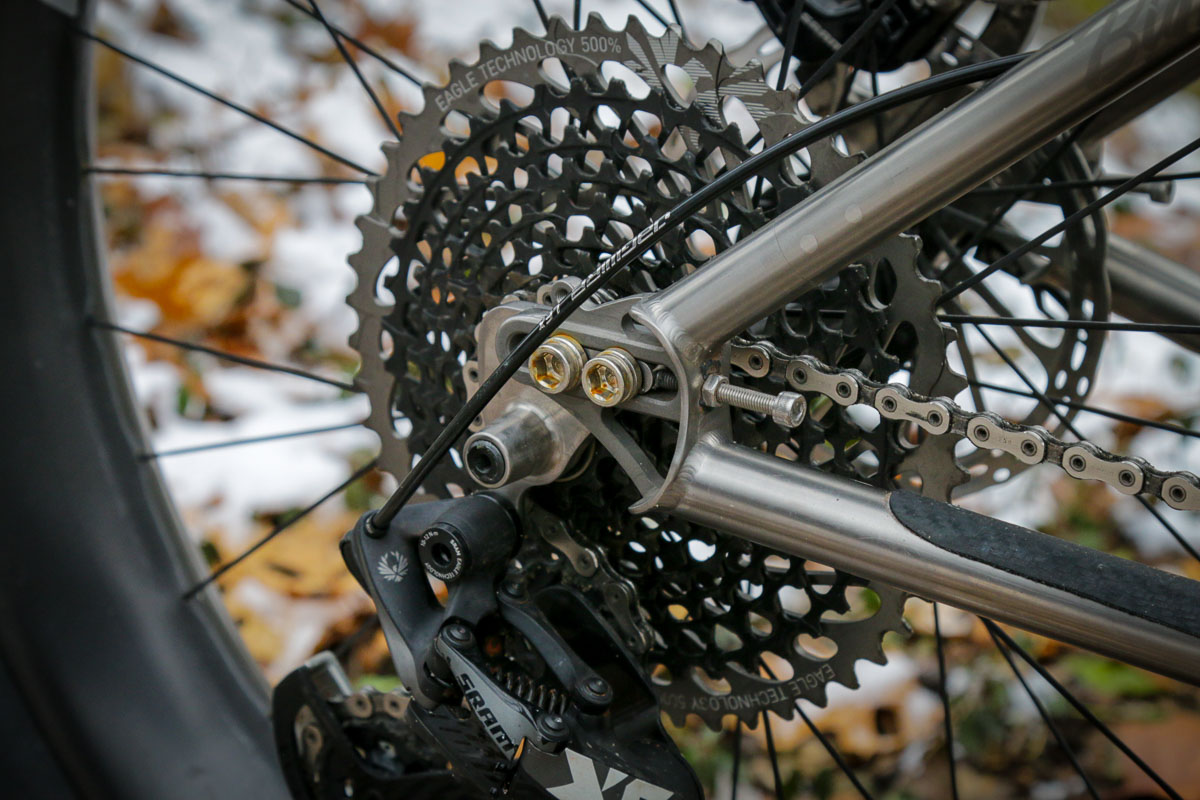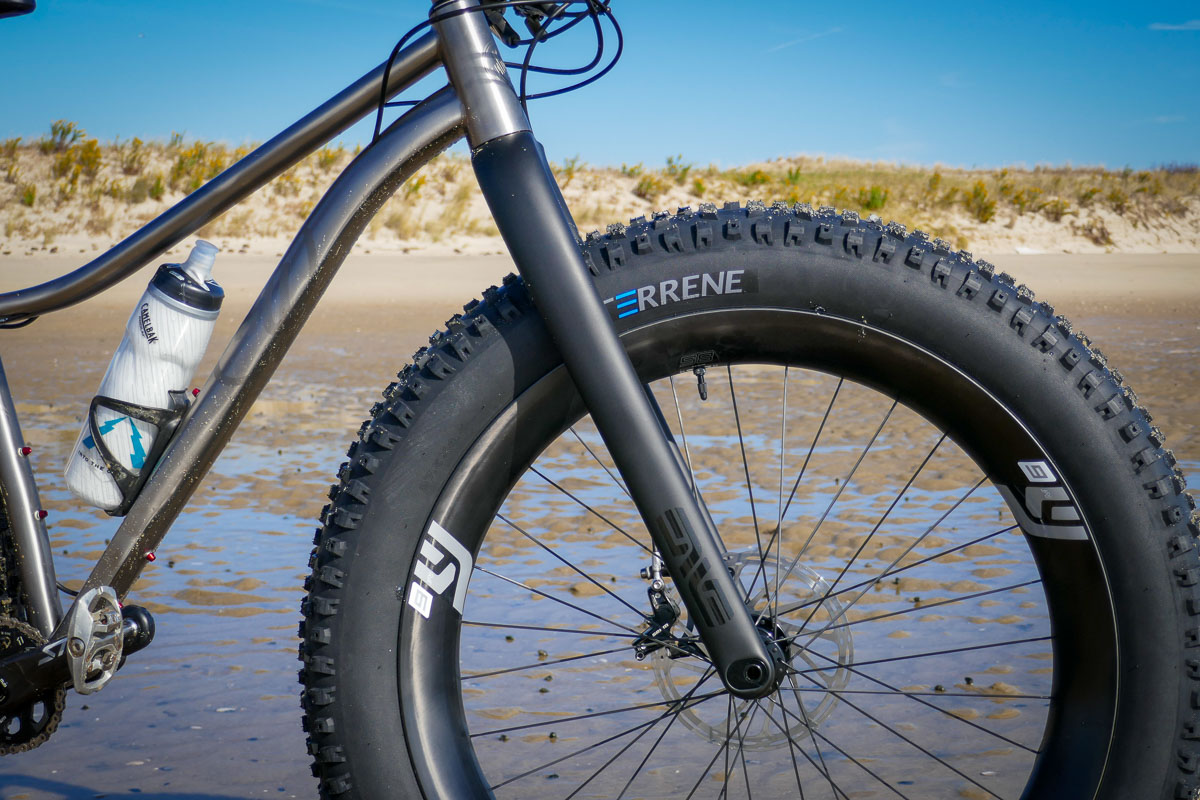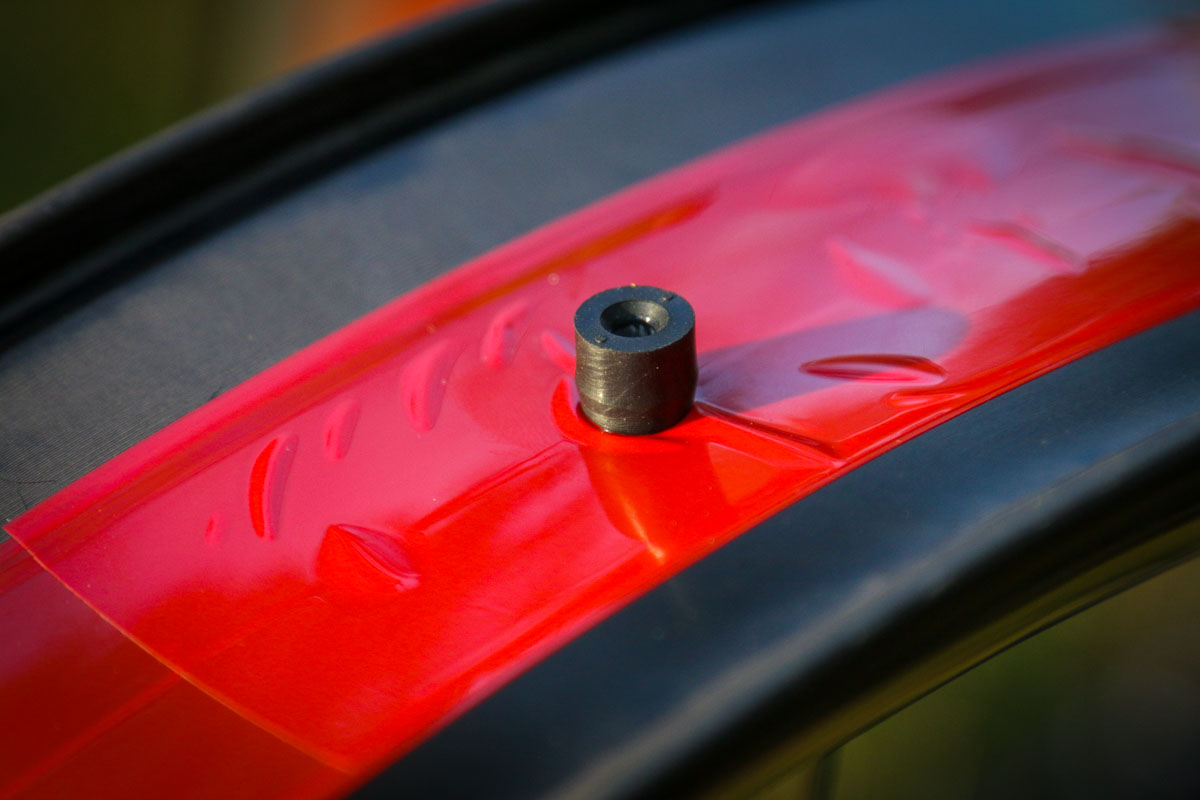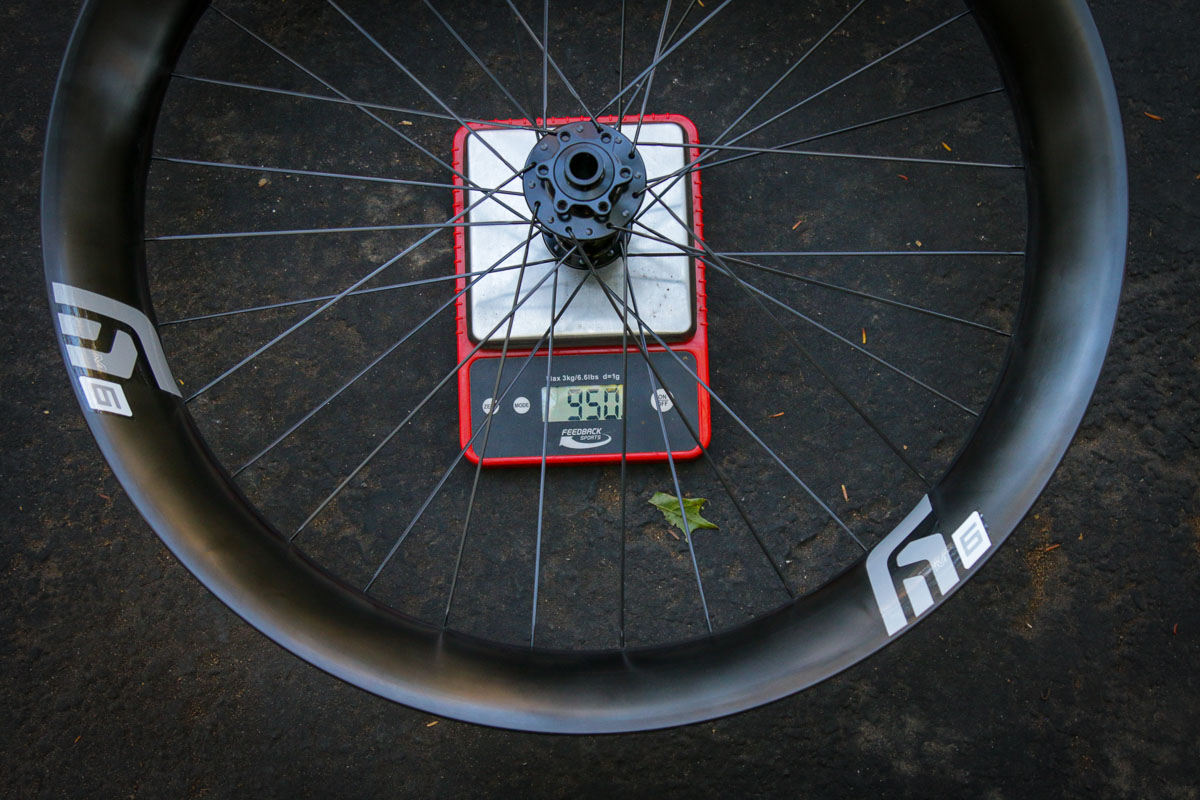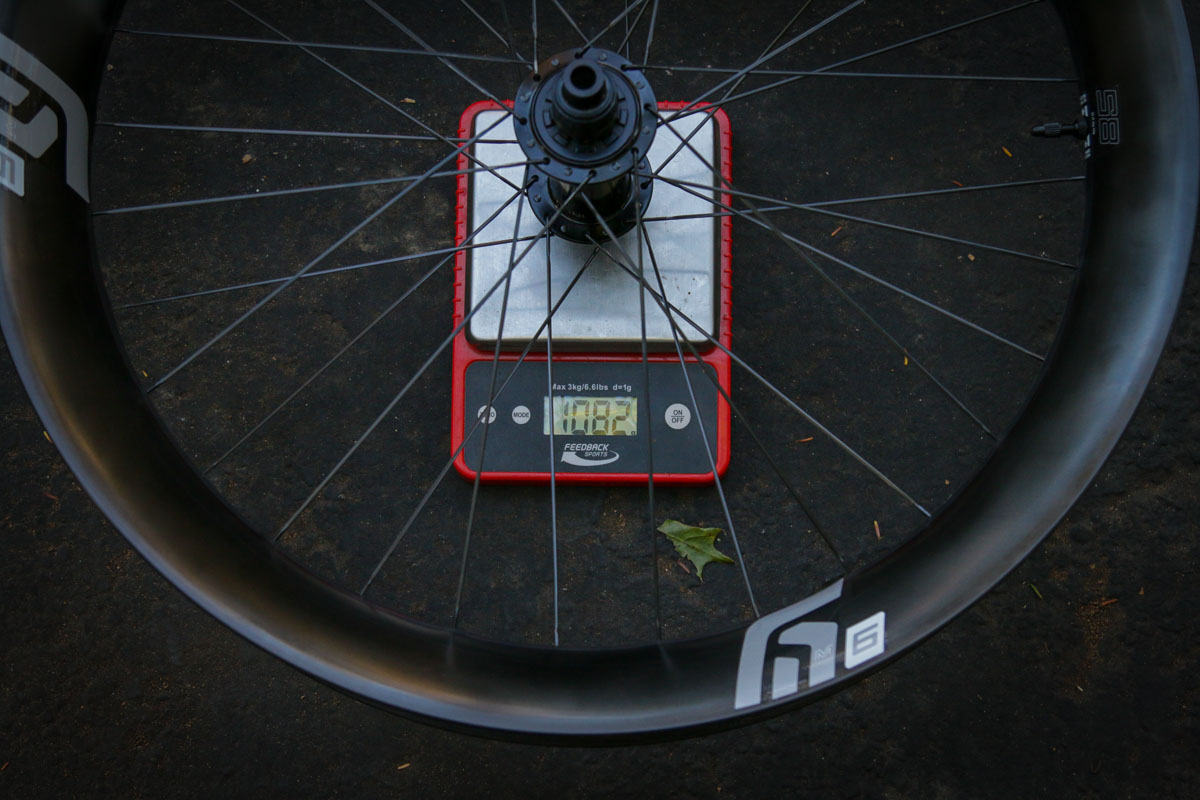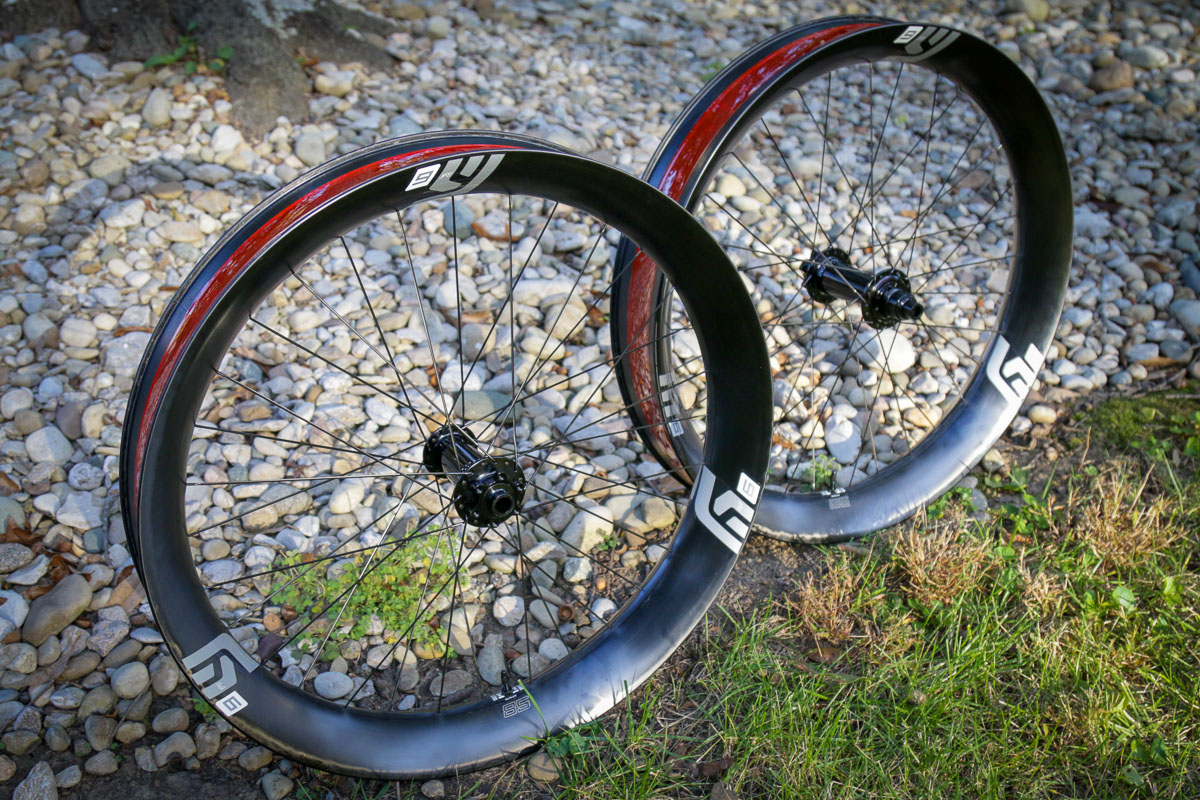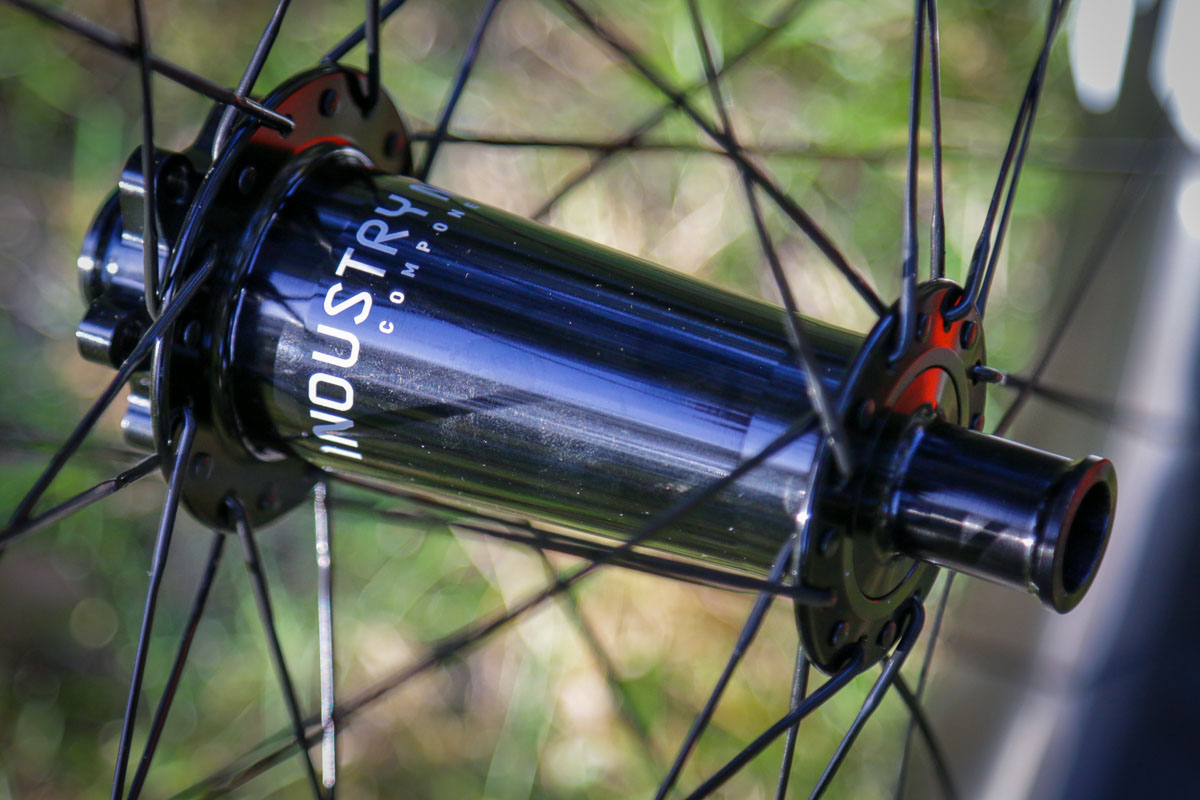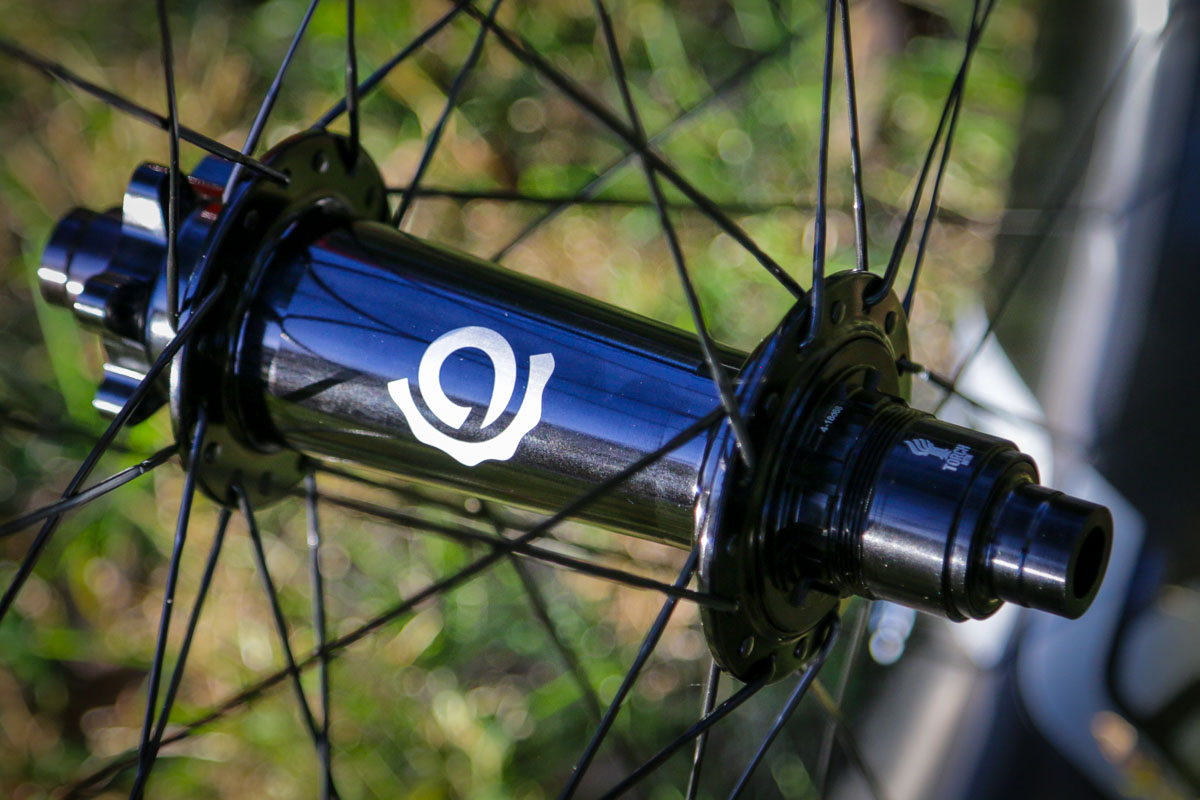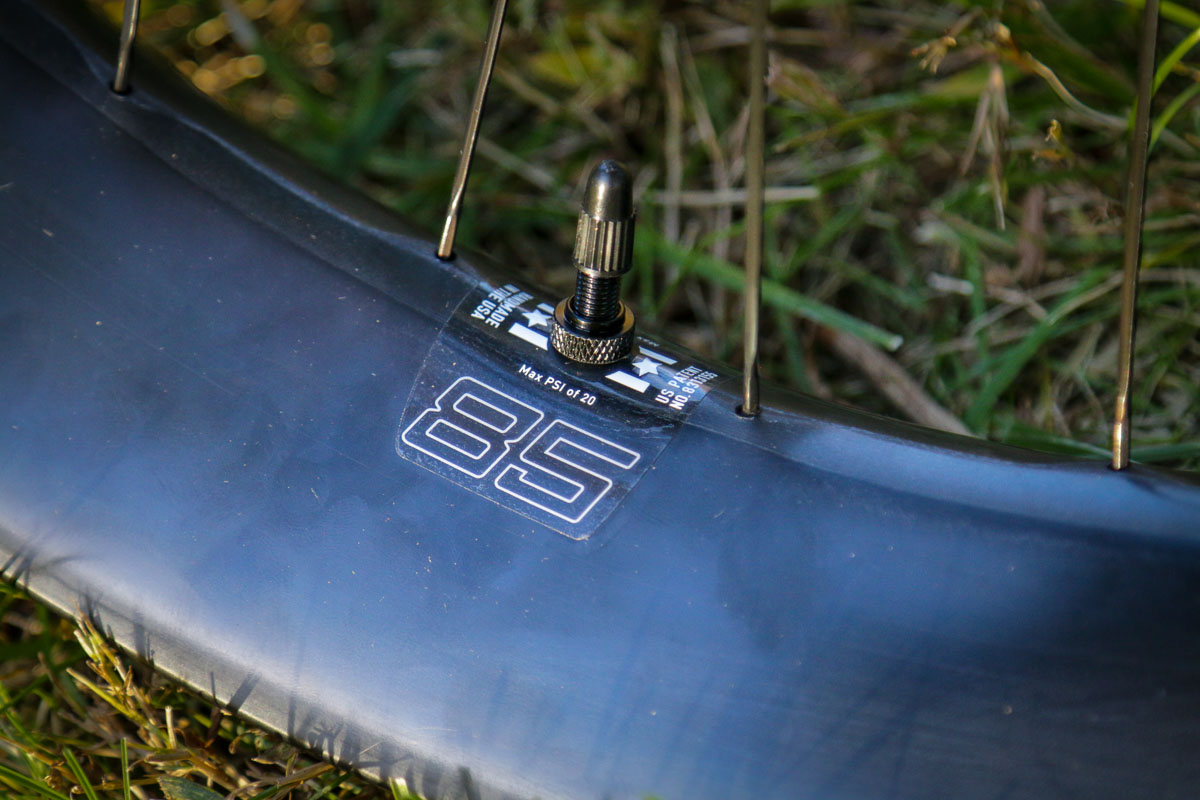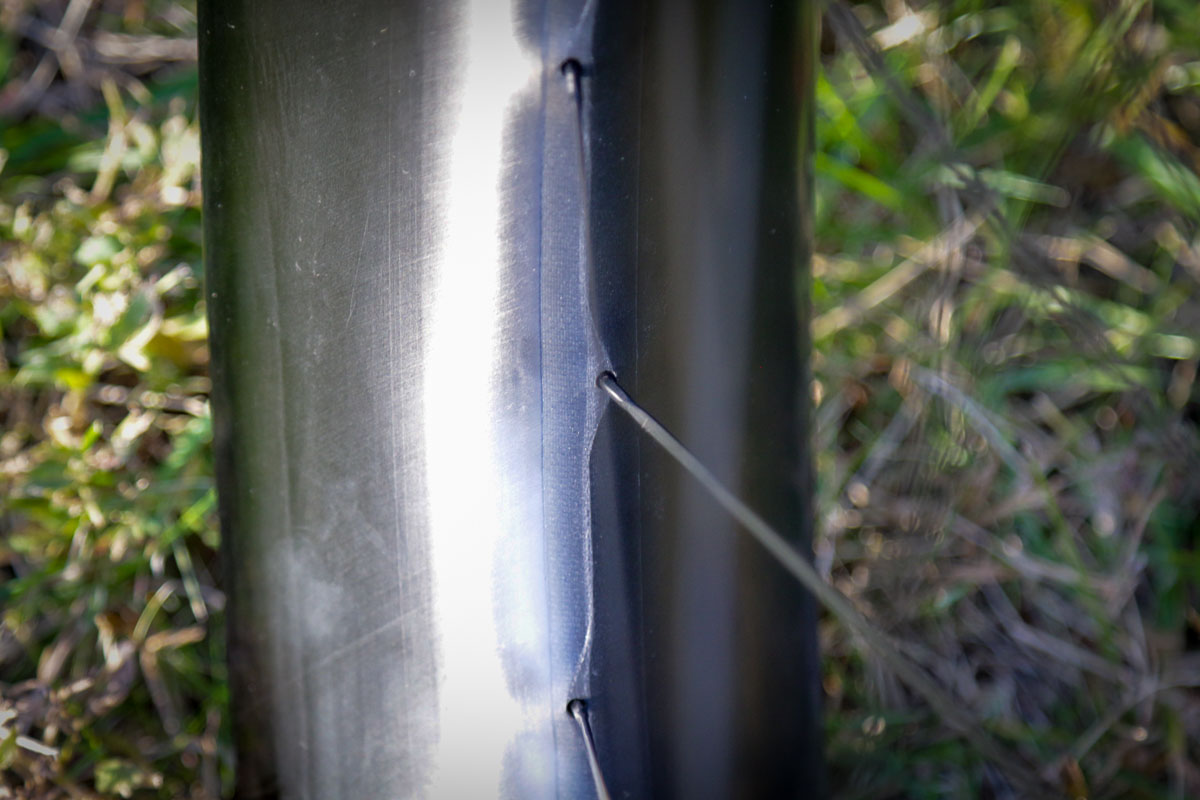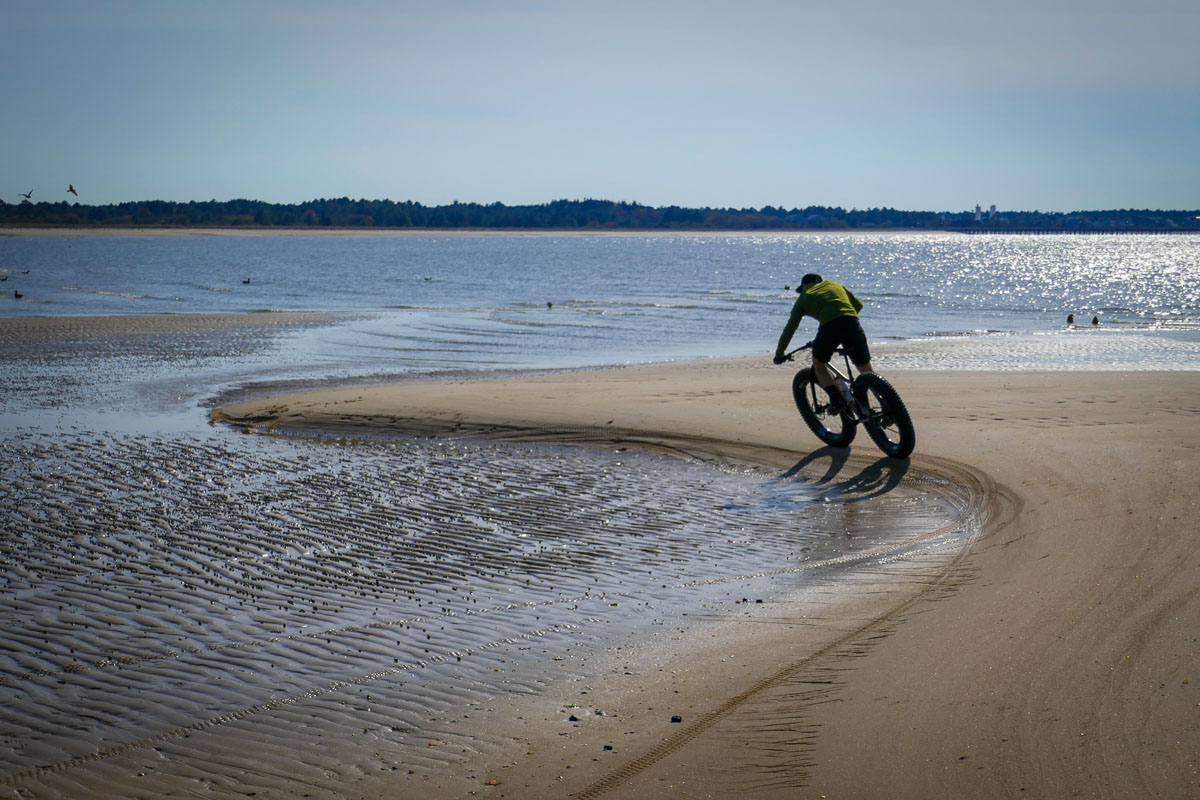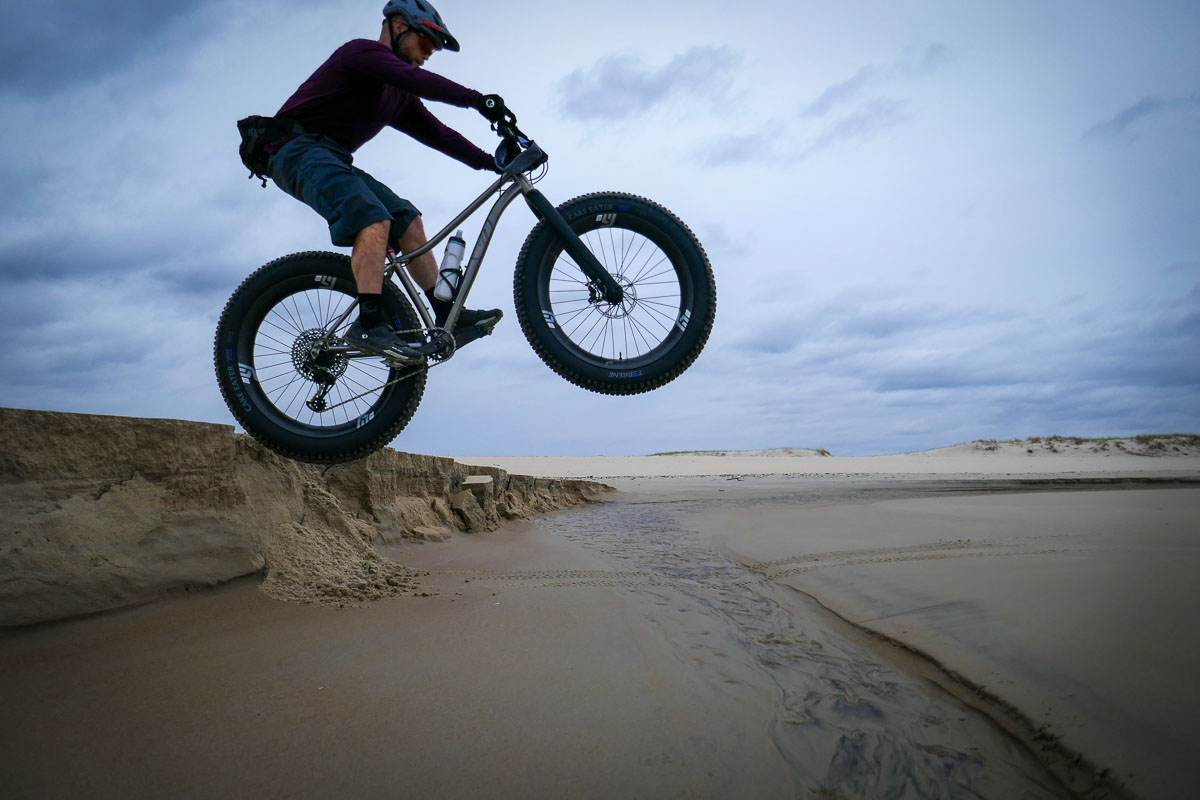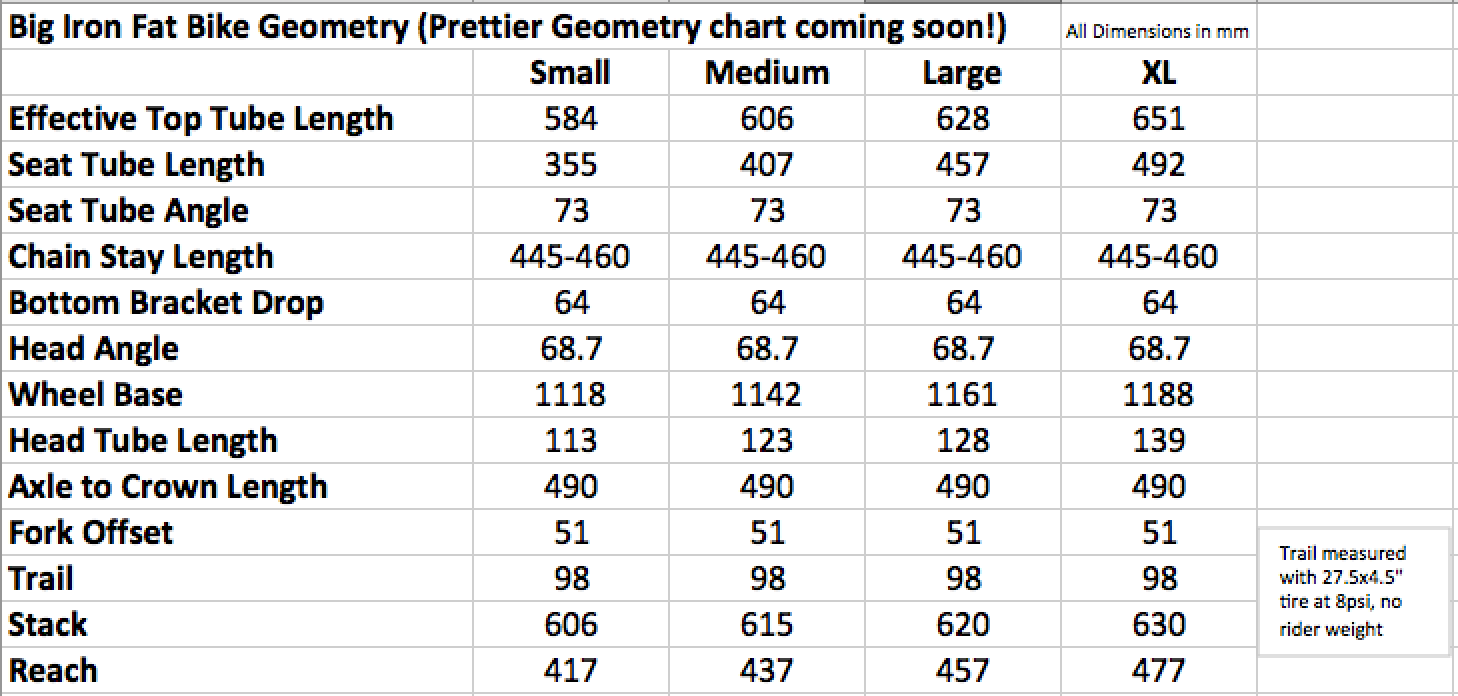It’s safe to say that Adam Miller knows his fat bikes. After growing up in Alaska and starting at a bike shop at an early age, Adam went on to work for 907, and then founded his own carbon fat bike company – Borealis bikes. After selling the brand in 2015, Adam set out to create bikes in a different material – titanium. With the help of Jason Schiers and Ben Craner, Why Cycles was created to build the bikes they wanted to ride. But due to a non-compete clause, for the first few years Adam was limited to mountain bikes and gravel bikes – anything with less than a 3″ tire. For three years, Adam had been dreaming about his perfect fat bike, and when the time finally came, he wasted no time in creating the Big Iron.
In actuality, Why Cycles probably ended up with the perfect timing to launch the Big Iron. Like the rest of the industry, fat bikes have still not settled on a wheel or tire size which depending on your needs and wants, could be a good thing or a bad thing. If you’re looking for the most flotation possible, as well as the best roll-over ability, then you’re in luck. The Big Iron fits the biggest fat bike rubber on the planet – in both wheel sizes.
27.5 or 26″? Take your pick
Technically, the Big Iron was designed around 27.5 x 4 – 4.5″ tires, and is shown above with Terrene’s 27.5 x 4.5″ Cake Eaters installed. But the bike can also run 26 x 5″ tires mounted to the appropriate rims.
Terrene deserves major credit for the sizing of the 27.5 x 4.5″ Cake Eater, as their fat bike tires have consistently measured extremely close to their true size. These actually measured slightly wider than claimed with a 4.635″ width. The 26 x 5″ Terrene Johnny 5 also measures very close to claimed at 4.788″, but on an 80mm rim. You can clearly tell by amount of tread wrapped around the edge of the tire that this is a tire meant for a 100mm rim. I’m fairly certain that it would measure the full 5″ when mounted to the wider rim.
It’s worth pointing out that in spite of being taller and nearly as wide, the 27.5 x 4.5″ Terrene Cake Eater tires are a good bit lighter than the 26 x 5″ Terrene Johnny 5s at 1599g vs 1788g.
Which brings us to the wheel and tire selection for the Big Iron. If you’re looking for the most flotation possible, a 26 x 5″ tire on a 100mm rim would probably be the ticket. But for nearly as much flotation and better roll-over, the 27.5 x 4.5″ set up is tough to beat. This combination is noticeably taller than the 26 x 5″ set up – by almost 20mm. But it all fits within the Big Iron’s frame quite nicely – even with a lot of room to spare in the adjustable dropouts.
Why Cycles points out that the frame will also work well with the current crop of 27.5 x 4.0″ tires out there as well, just with a slightly lower bottom bracket (or add a slightly taller fork for a slacker head tube angle, and a more aggressive ride). You can also fit a full 29 x 3.0+ tire set up if you choose.
As with their other bikes, the Grade 9 3/2.5 titanium frame of the Big Iron is shapely and offers sleek internal cable routing along with a 6/4 titanium head tube, bottom bracket shell and machined pieces.
While I don’t mind internal cable routing on the frame, the internal cable routing on the new ENVE Fat fork is a bit of a turn off. More than any other bikes in my fleet, I tend to swap between rigid and suspension forks on my fat bikes quite a bit. Depending on the riding and the terrain a rigid fork can either be a blessing or a curse. Internal cable routing through the fork complicates the ability to quickly swap forks without bleeding the system. If you don’t even plan to swap your fork, then it’s not such a big deal though.
In order to clear those massive tires, Why Cycles had no choice but to go with a wider 100mm threaded bottom bracket shell. However, you can install the RaceFace cranks with the narrower q-factor with the chain ring flipped to clear the tires. You won’t get to the narrow q-factor of something like the Otso Voytek, but then again, you can’t fit 27.5 x 4.5″ or 26 x 5″ tires in that bike either.
Other frame details include a 12 x 197mm rear axle with a sliding dropout and drive side frame split to allow for belt drives or single speed use. The frame also offers full rack and fender mounts, a three pack mount on the down tube with two additional bottle cage mounts, and a 42/52mm integrated headset with tapered steerer. You’ll also find a 31.6mm seat tube, 34.9mm seat clamp, and max 180mm rear post mount disc brake.
Of course, the frame is internal dropper post compatible with the hose poking out of the downtube and back into the seat tube for a smooth transition.
Build and pricing
The build of our test bike is basically their Eagle X01 kit with the addition of the new ENVE Fat Fork and M685 fat bike wheels. It also features the RockShox Reverb with the 1x Remote upgrade. All together, it checks in at just over 29lbs with pedals, a bottle cage, and tubeless sealant in the tires. To be honest, I’m not quite sure how that compares since I have not weighed any other titanium fat bike with wheels and tires of this size. It certainly feels pretty light given how monstrous the thing is.
Pricing for the Big Iron starts at $2349 for the frame, $2749 for the frame and fork (Bontrager Haru Rigid, ENVE fork adds $150, Manitou Mastodon Pro adds $200), and $3,999 for a complete Eagle GX kit. As shown, the X01 build with the ENVE upgrade kit is a possibility, but it would end up very close in price to the XX1 ENVE kit which sells for $7,099.
As for the wheels themselves, they check in at 950g for the front and 1082g for the rear, both with tubeless tape and valves already installed (how they ship). The design of the rim is so that you have to use less tape than the width of the rim to save some weight. Setting them up tubeless was a breeze, and it was off to the beach for their very first ride.
I will note that the wheels have internal nipples which could be a headache for maintenance down the road, which I generally despise, but this may be a different story. On every high end fat bike wheel set that I’ve used, the nipples take a beating from the effect of road salt, slush, mud, sea water, etc. If this protects the nipples better in the long run, I’m all for it.
First Ride
Given that it’s still not quite winter fat bike season out there, we headed straight to the beach for the Big Iron’s inaugural ride. The varying conditions of Maryland’s sand meant everything from complete hard pack, to the softest sugar sand that’s difficult to even walk on, which made for a pretty good testing ground for the bike.
As you’d expect from a bike with this pedigree, the Big Iron is a blast to ride with nimble handling despite the gargantuan wheels and tires. The flotation was better than expected with the 4.5″ tires and it seemed to have no problem with the sand conditions no matter how soft. The bigger wheels and tires definitely take a big more energy to get up to speed, but once there, the bike likes to cruise over anything in its path.
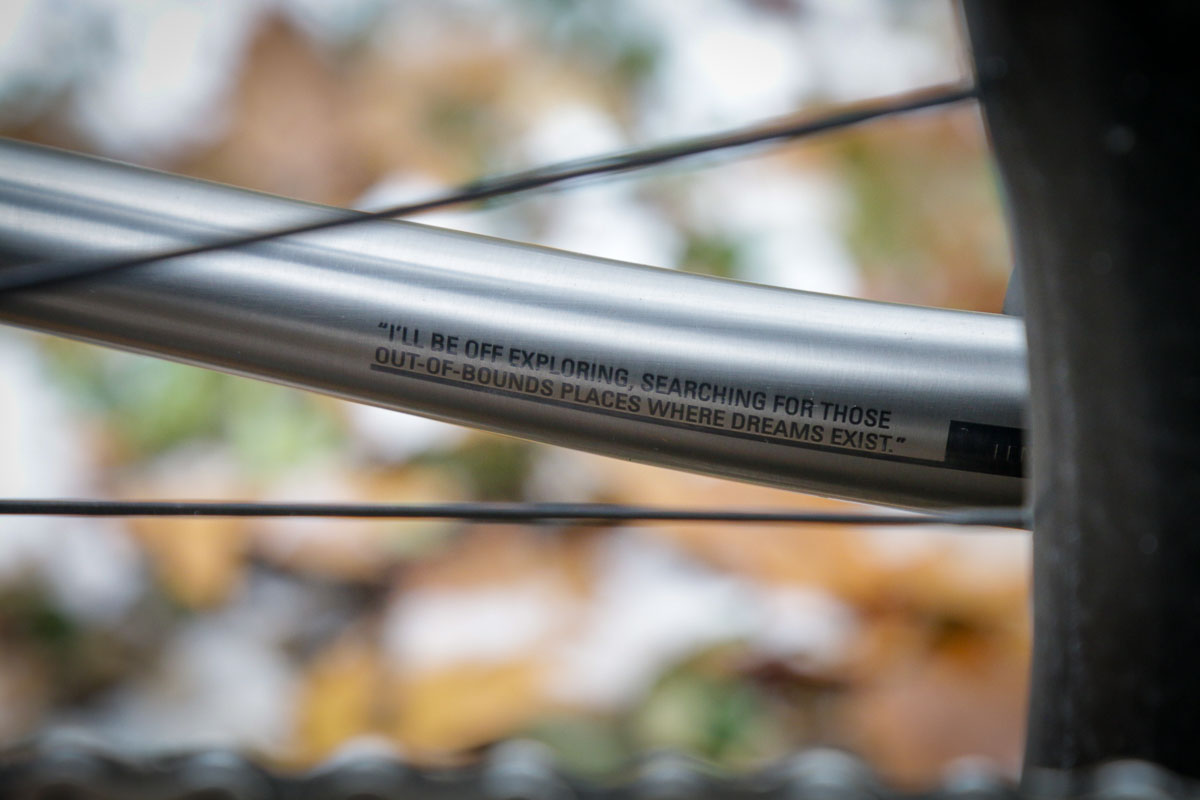
First impressions are that this is definitely a worthy successor to Adam’s original Borealis Echo which was one of my favorite fat bikes at the time. With the modern wheel and tire options, it seems to be an excellent choice for the rider looking for big flotation and traction in a playful package – but we’ll check back in on that claim after a full winter on the Big Iron!
